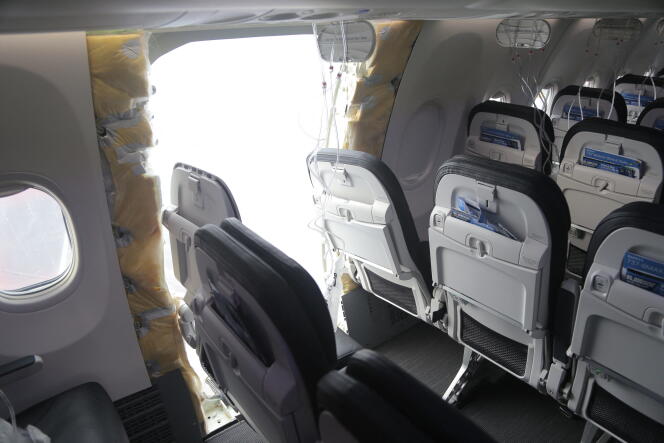


"Is it okay if I hold your hand?" was the plea that 44-year-old Christopher Hickman, seated in row 8 of a Boeing 737 Max 9, heard his neighbor ask. It was Friday, January 5, shortly after 5 pm, and they were on board Alaska Airlines Flight 1282. According to the Wall Street Journal, a few moments earlier, there was a loud bang in the plane flying from Portland, Oregon, to Ontario, one of the airports on the outskirts of Los Angeles, California. A plug in the fuselage, replacing a possible additional door in row 26, was literally blown out. A child's T-shirt was ripped off, a teddy bear was sucked out, two cell phones flew out of the plane, oxygen masks dropped and the cockpit door was torn open.
Everyone thought their time had come and were messaging their loved ones. A passenger filmed the gaping hole in the plane as the pilot turned back for an emergency landing. It was a miracle. The plane, which was climbing, was less than 5,000 meters high and did not explode. All 171 passengers and six crew members were strapped into their seats. Seats 26A and 26B were unoccupied. The aircraft landed in Portland at 5:27 pm without casualties.
A miracle, yet a catastrophe for Boeing. This latest major failure rekindles mistrust of its 737 Max aircraft, following the accidents in October 2018 (Lion Air in Indonesia, 189 dead) and March 2019 (Ethiopian Airlines, 157 dead) due to a faulty in-flight stabilization system. Is Boeing a reliable manufacturer? The company was hoping to return to growth and peace in 2024.
On Monday morning, the mood on Wall Street was one of mistrust. The aircraft manufacturer's shares lost nearly 7% on the stock market, while attention focused on the causes of the accident. The US Federal Aviation Administration (FAA) ordered the grounding for inspection of 171 Boeing Max 9s, used mainly by United Airlines (79 aircraft) and Alaska Airlines (65 aircraft) in the United States. Both airlines had to cancel hundreds of flights. The 62-pound part was found in the garden of a Portland area teacher, which will facilitate the investigation. However, the recording of the cockpit conversations was erased because it had not been backed up – after two hours, the conversation was overwritten by new data.
There are many questions, including regarding Alaska Airlines. One of the pressurization warning lights on the aircraft in question had been activated during three earlier flights. It was impossible to know whether this was actually a pressurization problem or a fault in the alarm system. The company, which had declared the case "noncritical," still had enough doubts to stop the aircraft from serving Hawaii over the Pacific. It had ordered further investigations, but these had not been completed before Friday's flight, raising questions about the promptness of safety inspections.
You have 65% of this article left to read. The rest is for subscribers only.
